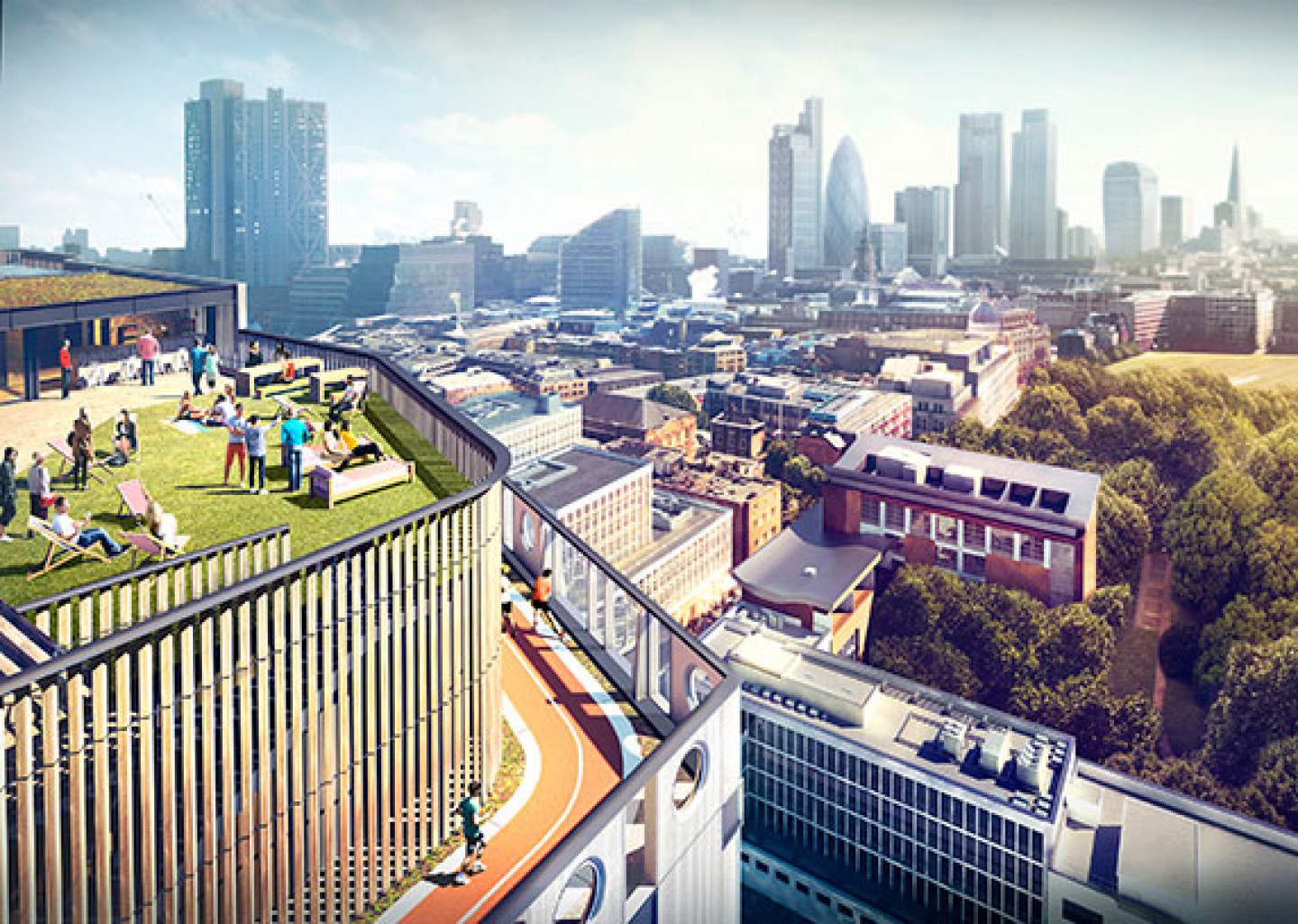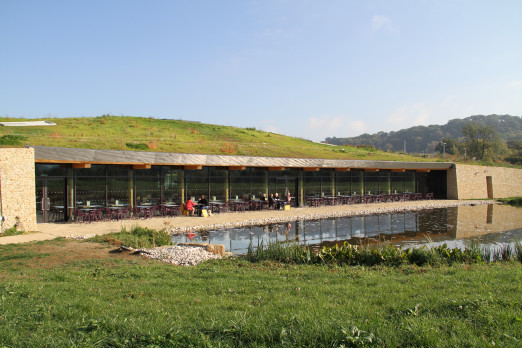A highly engaged audience packed out the Designing for Public Health event organised by The Building Centre in partnership with the Museum of Architecture. Below our round up below, you can find a highly useful resource of recent reports from the leading experts in the field
Chair Paul Lincoln, Deputy Chief Executive of the Landscape Institute opened the evening, benchmarking the discussion through two reference points: it has been three years since local authorities were made responsible for public health services and for improving public health generally; and it’s been three years since the Landscape Institute produced their report, Public Health and Landscape – Creating Healthy Places.
In a recurring theme of the evening (classifying, measuring, quantifying the design of health), Lincoln listed the report’s five principles of a healthy place: they improve air, water and soil quality, incorporating measures that help us to, and where possible, mitigate, climate change; they help overcome health inequalities and can promote healthy lifestyles; they make people feel comfortable and at ease, increasing social interaction and reducing anti-social behaviour, isolation and stress; they optimise opportunities for working, learning and development; they are uplifting and healing for both physical and mental health conditions.
(Left to right: Lucy Saunders, TFL/GLA; Tom Armour, Arup; Rachel Toms, The Design Council CABE; Henk Bouwman, The Academy of Urbanism)
1. Healthy Streets
This broad set of criteria around health outlined by The Landscape Institute Report (the physical, the emotional, the social, the cognitive and the ecological) were touched on during the evening by each speaker. As a sign of the times, Lucy Saunders, public health specialist for Transport for London and Greater London Authority, noted that she was the first public health specialist employed by TFL.
When asked why the TFL organisation has such a role, Saunders believes it has more potential than any other organisation to impact on health, encompassing issues such as air pollution, traffic collisions and the physical effort (or not) involved in commuting.
Indeed, Saunders pointed out that 4-in-10 adults, and 7-in-10 children aren’t active enough. What’s more surprising is that despite the recent high social, cultural and news value attached to cycling, it is still a niche activity among the population as whole.
She argued that healthy activities such as walking and cycling were dependent on “healthy streets” which include necessary features such as clean air, shade and shelter, things to see and do and places to stop – an interesting set of criteria also expressed in examples by other speakers such as Tom Armour, Global Landscape Architecture Leader at Arup, who cited Arup’s 2015 report Cities Alive as a significant influence in the organisation’s thinking about the city.
2. Convenience
Like other speakers Armour cited the fact that health issues are rarely out of the headlines whether it’s about an ageing population, obesity or mental health – and well-designed landscapes are crucial to addressing these issues.
Armour highlighted the idea of ‘convenience’ as the key to getting people more active, more engaged with healthy spaces. Indeed, this idea is at the heart of healthy spaces in the city, where places such as Victorian urban parks and Central Park in New York emerged due to concerns around peoples’ health – a belief in the social value of bringing the countryside to the city.
He underlined the social and economic value of healthy spaces such as parks because of their permanence. At the other end of the 'time' spectrum Armour also highlighted improvised temporary places in New York where car-centric areas had been transformed by simply marking the territory using paint, cordoning off a space for stalls and pedestrians where within five minutes of this re-territorialisation, the area was crowded with people.
(Arup's Tom Armour, showing how the simple application of paint can redefine the boundaries of a space)
3. Reclaiming Space
The other design strategy linked to convenience is the practice of claiming back space such as the High Line in New York and the 43km of the city’s M-30 ring road buried by the Madrid Rio project – tunnelling enabled the overground to be transformed, reclaiming riverbanks and urban spaces. In a way, it's simply giving these places a human scale rather than the scale of the automobile.
(Madrid Rio project from Arup's Cities Alive report)
Like other speakers, Armour was keen to quantify the economic benefit of healthy cities, citing data such as the saving of £10 million in healthcare costs as a result of 10 percent more cycling in Copenhagen.
But also at a fundamental level he addressed the very basic issue of awareness - the sheer number of trees outside the Arup office in central London, oxygenating and beautifying the street, were invisible to colleagues until Armour pointed them out.
4. The Design of Everyday Life
Rachel Toms, Program Lead, Design Council Cabe unpacked the Active by Design report highlighting one fascinating piece of data form the US around premature deaths.
Healthcare only plays a relatively small role in preventing early death - 10 percent; our behaviours play a much larger role - 40 percent, obvious when you think about it, but crucial when considering the greater economic and social value of designing spaces.
This issue was key to another simple but unalterable fact – when we make planning decisions or invest in public realm, we can include or design out health. The point is that making healthy spaces (and thereby improving quality of life and saving money) are not accidents or issues of fate. They are the result of decisions, big and small.
Later on, in the lively Q&A session, Toms addressed the political, social and cultural drivers of decisions around health, spaces and design. So while we are all keen on individuals and communities shaping and taking responsibilit,y she focused the audience’s attention on the fact that without government guidance it can lead to increasing health inequalities – there are more immediate challenges in the daily life of poorer people. In effect, designed spaces are a political issue and a matter of social justice.
Toms also emphasised the healthy design of everyday life: offices where people are encouraged to exercise and interact; schools which maximise the use of their space for physical activity; the fact that good design, such as well-designed city parks attracts people to make use of them.
(Rachel Toms showing the design of everyday life, in this case City Park Bradfor. Feature image White Collar Factory London by Allford Hall Monaghan Morris)
5. Densification not Intensification
Henk Bouwman, Director at The Academy of Urbanism has been consulting and working in the area of transportation – for HS2 and is leading a scenario study on UK Rail 2065 for the Foresight programme for the Government Office for Science, among other projects.
He is particularly aware of the scattered spread of towns in the UK compared to Holland which has a huge impact both in terms of transportation and the consequent pollution.
But he also drew attention to the changing nature of city spaces, the way we work now, office spaces are now in cafes, trains, people use spaces in a different way.
Bouwman made an analogy with the number of empty buildings in cities and its inefficiency with how airlines had to change their practices and business models to make use of empty seating on planes.
Like Tom Armour, he also highlighted the value of reclaimed space, or design for optimising space, to enable space to become transformational such as the Central Station in Rotterdam.
Not only does the Central Station include many working hubs, partly fuelled by windows with 130,000 solar cells that cover 10,000 m2 of the total roof area of 28,000 m2, but once a month the building is home to the Rotterdam Philharmonic Orchestra.
(Henk Bouwman, Rotterdam Station)
Bouwman argued that we need simpler buildings, with flexible spaces and usages rather than spaces tailor-made and designed for specific functions.
We need more agility in our designed spaces and in how employers encourage lifestyle changes, coining the phrase “not densification but intensification.” We need to enable people to intensely work live and interact with other people.
Among the many insights generated from Bouwman’s sensibility which parks the comforts of conventional wisdom, was how simple ecological solutions are often seen as having no consequence – systems never work like this.
So the popular and worthy activity of cycling to Utrecht train station became a public eyesore in the overstacked bikes resembling a two-wheeled junkyard – but it was resolved by a cleverly designed underground bike park.
(Utrecht Station underground bicycle park)
Echoing Rachel Toms and Tom Armour, the project emphasized how enjoyable design makes better spaces and encourages better behaviours.
6. Necessary Role for Public Bodies
Questions from the floor raised the role of the city state and individual in taking responsibility and driving design for health, a topic highlighted by Bouwman. He recently travelled to Freiburg where the Mayor told him he saw the Mayoral role as one of facilitating citizens to make the place better.
Lucy Saunders noted the paradox of the public’s engagement – because there is so little engagement, there is an opportunity to be heard, especially as it’s often the voices of the status quo who shout the loudest.
Regarding the key factor in designing for public health, Tom Armour reiterated the issue of convenience – so putting facilities in public parks, enabling living communities to work near home so they walk and cycle, getting healthy without even knowing they are – health as a systemic by-product of good design.
Equally important, Armour argued, is reframing the agenda so that good design supporting healthy outcomes for the public are seen as providing a service worth investing in – like the expenditure on things such as traffic lights.
7. Rethinking Nature
Henk Bouwman likewise believed we need to rethink and re-educate ourselves about nature. So when it comes to discussing the cost of maintaining urban greenery, for example, we need to move to thinking from low-maintenance to no-maintenance – wild is good.
On a similar and realistic note, Paul Lincoln reflected on the fact that the general tenor of the debate in the room, and the presentations, didn’t reflect the wider conventional idea of what it is to live the ‘good life’ – it's more accurately represented by cars and shopping, by being able to drive to Brent Cross shopping centre, a journey he has tried on occasions to accomplish on foot and its nightmarish quality sounded like a plot from a J.G Ballard novel.
A fascinating event pitching design at the centre of the debate around public health, uncannily echoing a much older exploration of the relationship between health, justice and society sketched out by Plato in The Republic - suggesting that the real problem is how health got medicalised, or reduced to pharmaceuticals. What was also clear is the extent to which politicians, policy-makers and citizens need to move architecture and planning from the periphery of debates around health and deploy them instead as key instruments in fostering better and more equitable health outcomes.
Download The Landscape Institute's "Public Health and Landscape: Creating Healthy Places" here
Download TFL's "Improving the Health of Londoners" here
Download Arup's "Cities Alive: Rethinking Green Infrastructure" here
Download "The Design Council's Active by Design" here








